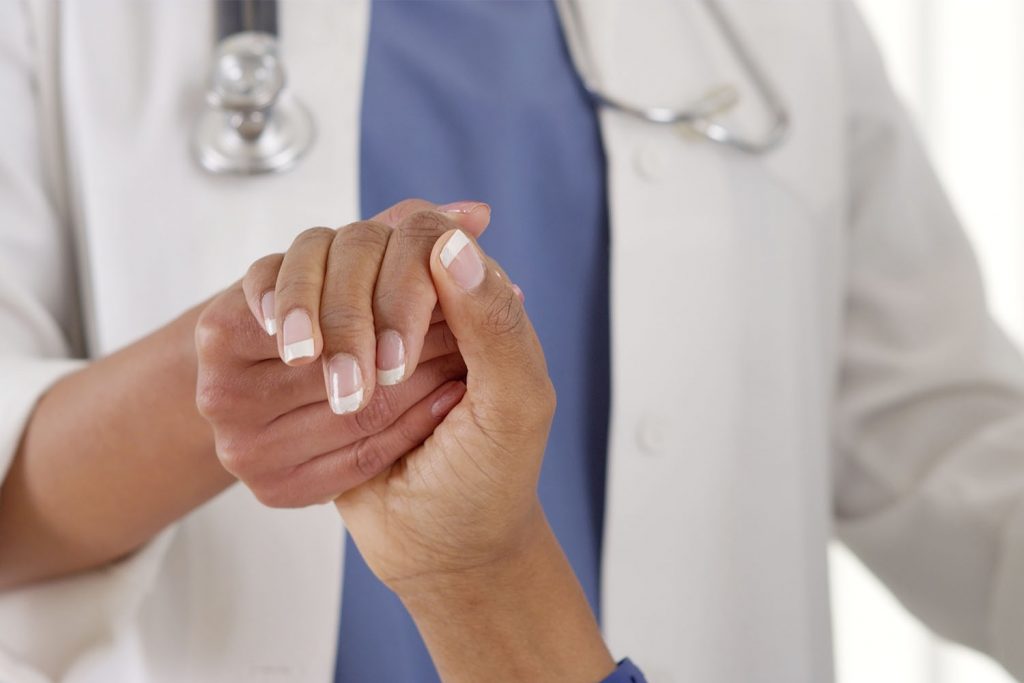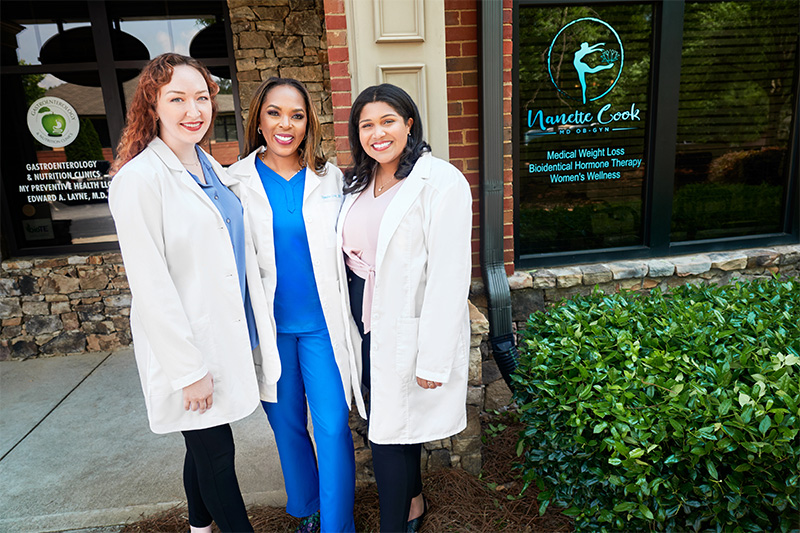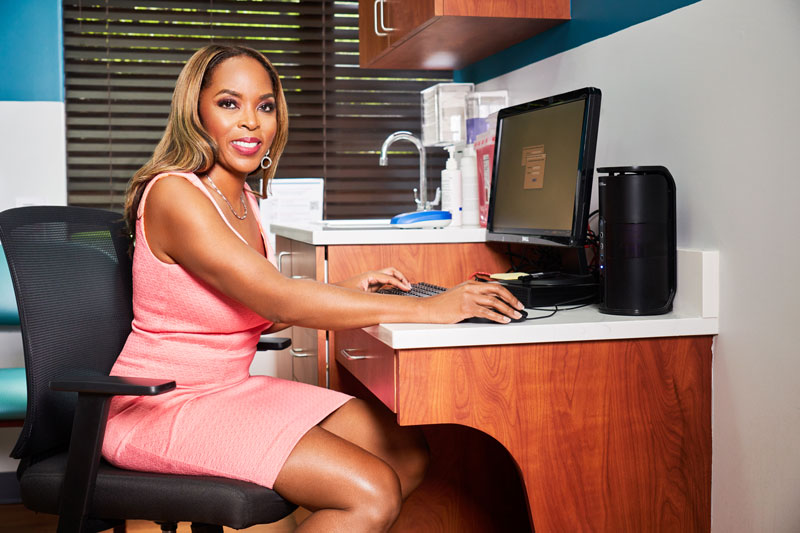All About Fibroids
You may have heard of them referred to as “leiomyomas” or myomas.”
The cause of fibroids isn’t known, but there’s a hereditary component to them. They can grow inside or outside of the uterus and an estimated 99.5 percent of fibroids are benign. Most need no treatment, but if they’re causing specific symptoms the fibroids may need to be removed.

As many as 50 percent of women will develop fibroids by the time they turn 50; and many women only discover they have fibroids during a routine visit with their gynecologist.
Fibroids can differ widely in size and numbers. You may have one or many and they can be the size of an apple seed or grow to the size of a grapefruit.
Uterine fibroid symptoms
The majority of fibroids don’t cause any symptoms, but others with fibroids may experience:
- Bloating and constipation
- Painful periods or heavy bleeding
- Pain during sex
- Enlargement of the lower abdomen
- Frequent urination
- Lower back pain
- A feeling of fullness in the pelvic and lower stomach area
- Reproduction problems or infertility
- Complications during pregnancy and labor
Dr. Nanette Cook will assess whether you have any of these symptoms, and if so, perform the necessary diagnostic tests.
What causes fibroids?
No one knows for sure what causes fibroids or why some women develop them and others don’t. Researchers believe that the hormones estrogen and progesterone may play a role in their development and fibroids may also have a genetic component since they tend to run in families.
Research has shown that fibroids grow quickly during pregnancy and they shrink when anti-hormone medications are employed. They also shrink or stop growing when you reach menopause when hormone levels naturally drop.
Fibroids can grow one of three places and they’re categorized based on where they appear. They can grow in the uterine cavity, the wall of the uterus, or outside the uterus. They’re rarely cancerous and don’t increase your risk of developing cancer.
Diagnosing fibroids
Most fibroids go unnoticed until they’re detected by your gynecologist during a routine pelvic exam. She’ll be able to feel or see them and make an accurate assessment of their size.
She may also order diagnostic tests that will create an image of the uterus to confirm their existence, determine where they are and how numerous. Tests that may be used include:
- Ultrasound – uses soundwaves and a probe that can be placed on the abdomen or in the vagina
- MRI – uses magnets and radio waves to form an image
- X-rays – the same type of x-ray that would be used for the lungs or a bone fracture
- CT scan – known as a “cat” scan, it takes a series of x-rays from different angles
- Hysterosalpingogram – known as an HSG, it uses a dye injected into the uterus and x-rays are taken
- Sonohysterogram – uses water injected into the uterus and then ultrasound images are taken
Less common is laparoscopy, in which the clinician inserts a long, thin device with a camera and light through a tiny incision near the navel to capture images. Another less common method is hysteroscopy in which a light can be combined with a camera and inserted vaginally. No incision is needed for a hysteroscopy.
Fibroid treatments
Most women don’t have any symptoms arising from fibroids and don’t require any treatment. If you experience heavy bleeding or pain, your gynecologist can help with over-the-counter or prescription medications. If the fibroids are large or you may become pregnant, surgical options are available and your gynecologist will provide you with information about the types of surgical treatment available.
Treatment for uterine fibroids varies from administering medication to performing in-office or hospital procedures.
New treatments for fibroids include hormonal drugs, along with radiofrequency ablation that uses heat to destroy the fibroids without damaging surrounding tissue. The fibroids remain, but will shrink.
What to ask your gynecologist
You’ll have numerous questions if fibroids are detected and your gynecologist can answer them for you. To make the best decisions for your health, you’ll want to know:
- How many fibroids you have
- How big they are
- Where they’re located
- Will they grow, how rapidly and how you’ll know
- Any problems they may cause
- How to monitor them
- Treatment options
Another question you may have if you want children is how they will affect your pregnancy. Many women have perfectly normal pregnancies even if they have fibroids. However, there are some potential risks that you should be aware of that includes:
- Need for a caesarean section
- Breech birth in which the baby isn’t positioned for a vaginal birth
- Labor fails to progress
- Placenta may break away from the uterine wall prior to delivery
- Preterm delivery
Stay informed
A significant portion of the female population develops fibroids with no symptoms or ill effects at all. Conversely, you may find them a minor annoyance or you may experience pain or periods that can interfere with your comfort and lifestyle.
It’s critical that you receive regular exams from your gynecologist to determine if you have fibroids now or if you develop them at a later date.
Dr. Cook has the experience to detect fibroids, monitor them, and help you develop a plan for dealing with them effectively if they’re causing distress or disrupting your life.
Request Appointment
For same day appointments please call us at (770) 431-2322. We make every effort to respond to your request right away during regular business hours.


